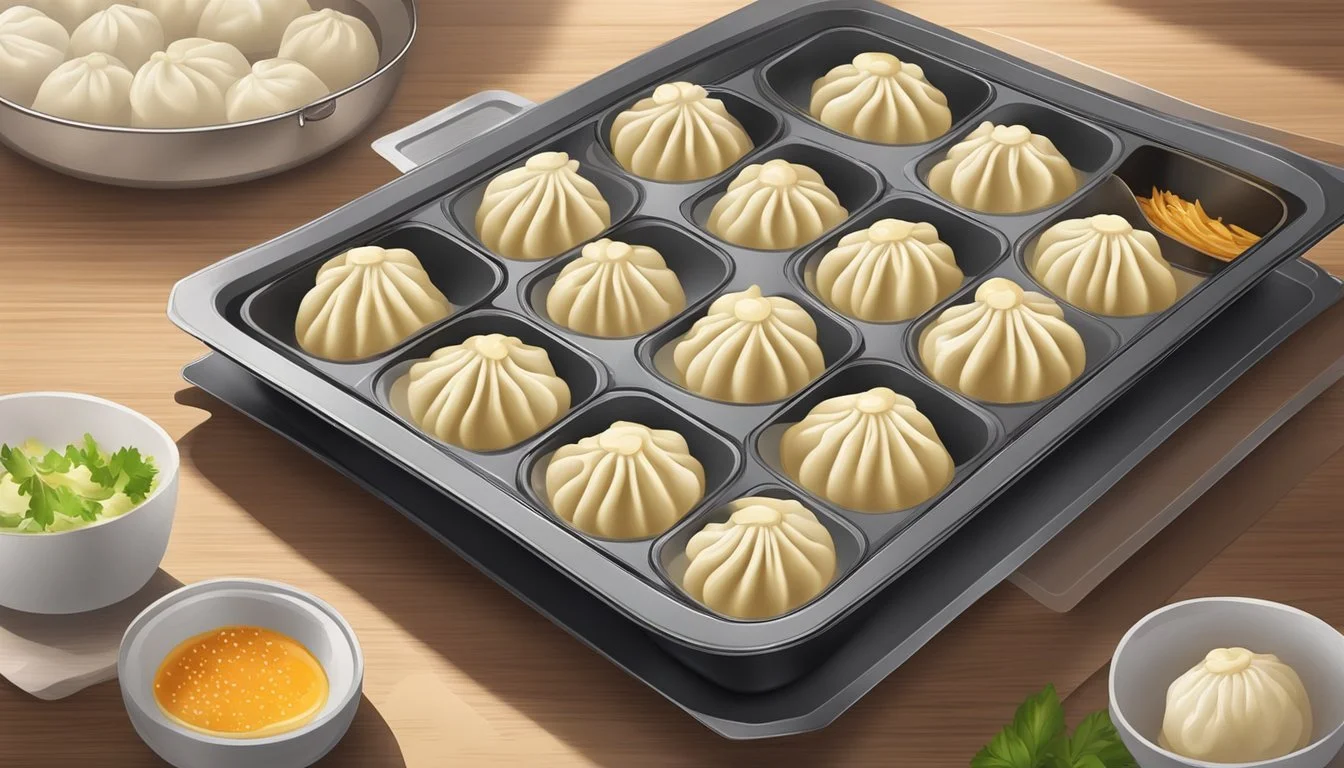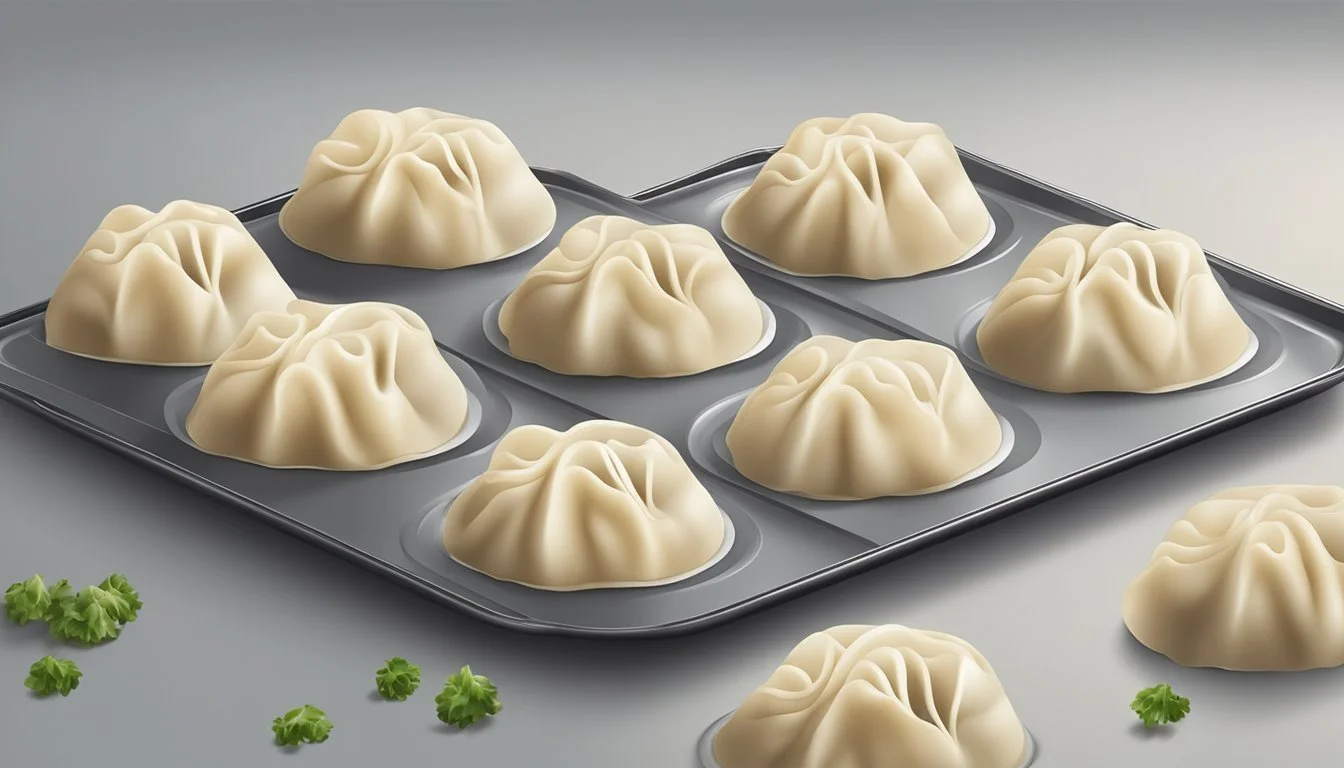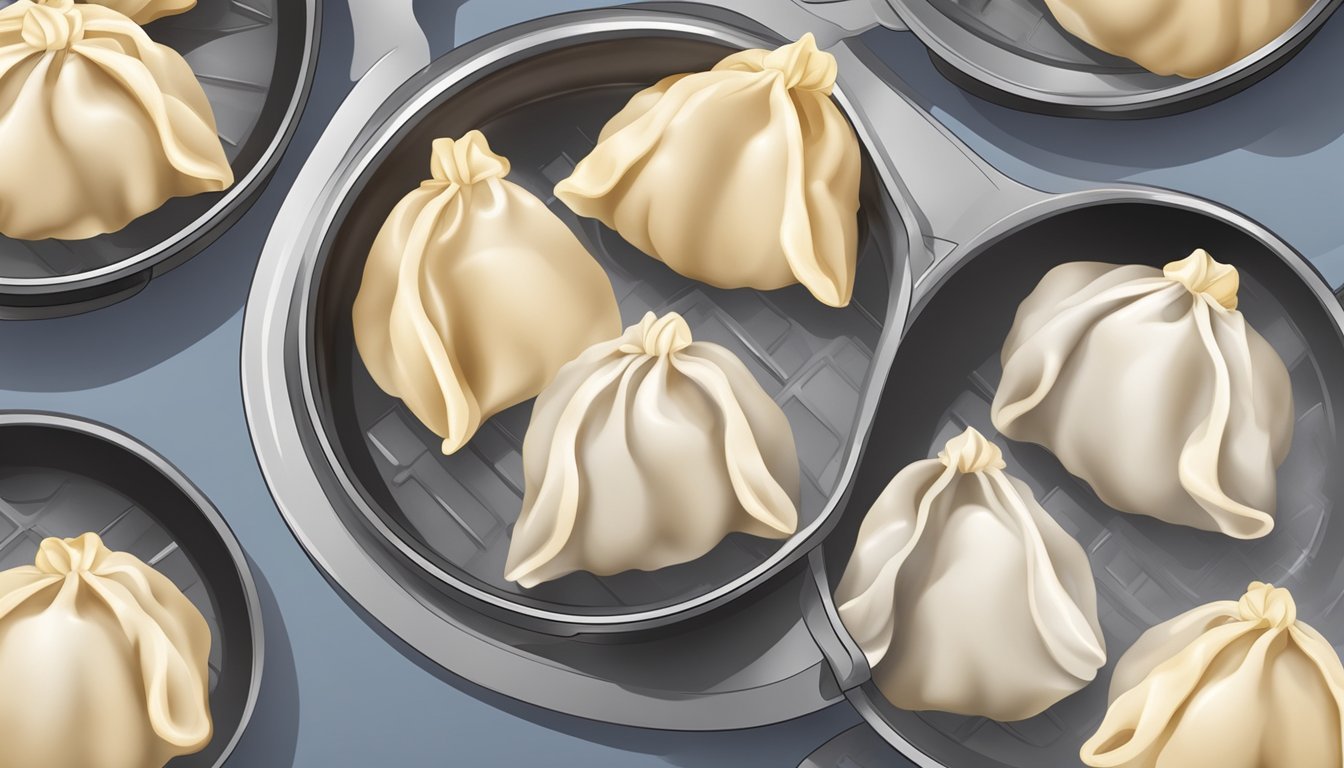Best Way to Reheat Dumplings Without Them Sticking
Simple Steps for Perfect Results
Reheating dumplings can be a delicate process that often results in them sticking together or becoming soggy if not done properly. Dumplings, regardless of their variety—whether steamed, boiled, or fried—require a reheating method that preserves their texture and flavor. The key to successfully reheating dumplings lies in using the right technique to ensure that they are warmed through without compromising their integrity.
To prevent dumplings from sticking together, careful attention must be given to both the preparation of the dumplings before reheating and the reheating process itself. It is important to ensure that the dumplings are separated and not overcrowded during reheating. This allows for an even distribution of heat and minimizes the risk of sticking. Whether utilizing an air fryer, skillet, oven, or steaming, the choice of method can make a significant difference in the outcome. Hence, the best way to reheat dumplings involves consideration of the type of dumplings on hand and selecting the appropriate reheating method to retain their distinct texture and taste.
Understanding Dumplings
Dumplings are a diverse and beloved food item across various cultures, each with its specific methods of preparation and traditional fillings. Getting to know dumpling types, fillings, and common reheating challenges is essential in appreciating these culinary wonders.
Types of Dumplings
Dumplings come in myriad forms, which often dictate the best reheating technique. Some common varieties include:
Boiled Dumplings: Typically found in Asian cuisines; they are often soft and tender.
Steamed Dumplings: Like Shumai or Har Gow, known for their delicate wrappers and moist fillings.
Fried Dumplings: Such as potstickers or pierogi, recognizable by their crispy exterior.
Baked Dumplings: Include pastries like empanadas, with a flaky or crusty shell.
Dumpling Fillings
The fillings are as diverse as the types of dumplings themselves and can include:
Meats: Ground pork, chicken, beef, or shrimp are popular for their rich flavors.
Vegetables: Common in vegetarian dumplings, mixtures might comprise cabbage, carrot, mushroom, or spinach.
Combination: Often, dumplings include a mix of meat and vegetables to balance flavor and texture.
Common Reheating Challenges
Reheating dumplings without them sticking together is crucial for texture and presentation. Challenges include maintaining the integrity of the wrapper and ensuring that the filling is heated thoroughly without drying out. A proper reheating method ensures the dumplings are as close to their original taste and texture as possible, with an internal temperature reaching 165°F for safety.
Preparing Dumplings for Reheating
Before reheating any dumplings, one must properly prepare them to ensure they don’t stick together or become soggy. Whether dealing with frozen dumplings or refrigerated leftovers, proper preparation is key to maintaining their quality and texture.
Thawing Frozen Dumplings
To prevent dumplings from sticking during the reheating process, it's essential to handle frozen dumplings correctly. They should be laid out separately on a plate or tray to thaw, which allows them to reach room temperature without becoming too moist or sticky. Avoid leaving them out for extended periods as this can cause them to become too soft and lose their structure.
Do: Place frozen dumplings in a single layer on a plate.
Don't: Allow dumplings to overlap or they may stick together.
Storing Leftover Dumplings
After enjoying a meal, leftover dumplings should be stored properly to preserve their quality for reheating. They should be placed in an airtight container before being stored in the refrigerator. This will prevent the dumplings from drying out and keep them from absorbing odors of other foods stored nearby.
Refrigerator storage: Place leftover dumplings in an airtight container and refrigerate.
Time frame: Consume refrigerated dumplings within 2-3 days for best quality.
Reheating Methods Overview
When reheating dumplings, the goal is to preserve their texture and flavor without causing them to stick together. Each method offers a unique advantage, whether in terms of convenience, texture, or flavor enrichment.
Quick Comparison of Reheating Methods
A quick rundown of reheating methods can assist in choosing the best approach for dumplings. Here are some popular techniques:
Steaming: Ideal for keeping dumplings moist and perfect for reheating steamed dumplings. It prevents sticking but requires a steamer.
Pan-Frying: Offers a crispy texture and is great for preventing dumplings from sticking. This method works well for nearly all types of dumplings but needs attentive flipping.
Microwaving: The fastest method, suitable for a quick reheat. Use a damp paper towel to keep them moist. May result in uneven heating or a slightly tougher texture.
Oven Baking: Good for maintaining a crispy texture. Attention is needed to avoid over-drying, and space between dumplings is a must.
Air Frying: Provides a crisp exterior without the need for much oil. Quick and effective, but best used only if the dumplings were originally fried.
Below is a summarized comparison:
Method Texture Outcome Convenience Equipment Needed Steaming Moist, Soft Moderate Steamer Pan-Frying Crispy, Golden-brown High Pan, Oil, Spatula Microwaving Soft, Tougher High Microwave, Towel Oven Baking Evenly Crispy Moderate Oven, Baking Sheet Air Frying Very Crispy High Air Fryer
By reviewing this comparison, one can select the best method to reheat dumplings according to their preferences and available kitchen tools.
Microwave Reheating
Microwave reheating offers a quick and efficient way to warm up dumplings while maintaining their texture. By carefully managing the moisture level and reheating time, dumplings can be heated evenly without becoming soggy.
Using a Microwave with a Damp Paper Towel
To prevent dumplings from drying out, one can utilize a damp paper towel. First, they should arrange the dumplings in a single layer on a microwave-safe plate. Then, they should take a paper towel, dampen it with water, and place it over the dumplings. This creates a steamy environment within the microwave, helping to keep the moisture in and reheating the dumplings without them sticking together.
Microwave Timing and Power Settings
When it comes to microwaving, the timing and power settings are crucial. Dumplings should be reheated at a medium-high power setting — around 50% to 70% — to avoid overheating. For timing, start with 30 seconds for a small portion and increase it as needed, up to 1 or 2 minutes for larger quantities. Stirring or turning the dumplings halfway through the heating process can help ensure that they heat evenly.
Stove Reheating
When reheating dumplings on the stove, the main challenge is to warm them thoroughly without causing them to stick together. Key methods include steaming, which preserves the dumplings' moisture, and pan-frying, which adds a delightful crispness to their exterior.
Steaming on the Stove
For those looking for a gentle reheating method that keeps dumplings moist, stove steaming is the ideal choice. One needs to use either a traditional bamboo steamer or a steamer insert set over a pot of boiling water. Here's a step-by-step guide for steaming dumplings:
Prepare the Steamer: Line the steamer with cabbage leaves to prevent sticking, enhancing the dumplings' flavor.
Arrange the Dumplings: Place the dumplings in a single layer, not touching, to avoid sticking.
Steam: Cover and steam for about 5 to 10 minutes, depending on the dumplings' size and density.
Pan-Frying with Oil
For those who desire a crispy exterior, pan-frying is preferable. Use a non-stick pan with a sufficient amount of oil to prevent the dumplings from sticking and to achieve a uniform golden crispness.
Pan-frying steps:
Heat the Pan: Warm a non-stick skillet or frying pan over medium heat.
Add Oil: Swirl a small amount of oil to coat the bottom of the pan.
Place Dumplings: Carefully arrange the dumplings in the pan with space between each.
Fry: Cook for 2-3 minutes, check for a golden crust, then flip to the other side and repeat.
Oven Reheating
When reheating dumplings in the oven, one has to focus on retaining their moisture while ensuring they don't stick together. The key is to use temperature settings and materials that facilitate an even reheat without compromising the dumplings' texture.
Reheating in the Oven with Foil
To reheat dumplings without them sticking together, it's best to utilize aluminum foil. Begin by preheating the oven to 350 degrees Fahrenheit (175 degrees Celsius). While the oven warms up, one should arrange the dumplings on a baking sheet, ensuring they are not touching each other to prevent sticking. Next, lightly dampen a piece of aluminum foil with water and cover the baking sheet loosely. This allows the dumplings to heat thoroughly without drying out. Place the baking sheet in the oven and heat the dumplings for about 10-12 minutes. The foil creates a steam environment that keeps the dumplings moist and separate.
Achieving a Crisp Texture in the Oven
For those preferring their dumplings crispy, the oven method can still be used effectively. After preheating the oven as described in the previous subsection, place the dumplings on a parchment-lined baking sheet without any cover to allow air circulation. It's crucial to leave space between the dumplings. To encourage browning and crispiness, one might opt to brush the dumplings with a thin layer of oil. Heat the dumplings for 10-12 minutes, but monitor them closely as the absence of foil can lead to quicker browning. Once the dumplings achieve a golden-brown crisp exterior, they are ready to be enjoyed.
Air Fryer Reheating
Reheating dumplings in an air fryer ensures they warm up efficiently while maintaining a crispy texture. The air fryer's ability to circulate hot air around the dumplings helps achieve even reheating without the dumplings sticking together.
Utilizing Air Fryer Basket for Even Reheating
To prevent dumplings from sticking and ensure even reheating, one should take care with their placement in the air fryer basket:
Preparation: Lightly coat the air fryer basket with a spray of cooking oil. This step helps to reduce sticking and facilitates even cooking.
Arrangement: Space the dumplings in a single layer within the basket, ensuring none are touching. This spacing allows for proper air circulation around each dumpling.
During Reheating: Halfway through the reheating process, it's beneficial to shake the basket gently or flip the dumplings. This action promotes an even crispy exterior on all sides.
Timing and Temperature for Reheating Dumplings
Exact timing and temperatures are crucial for reheating dumplings to perfection:
Step Action Temperature Time 1 Preheat air fryer 350°F (175°C) N/A 2 Place dumplings in basket; cook on one side 350°F (175°C) 3 min 3 Flip dumplings; cook on the other side 350°F (175°C) 3 min
It is important to note that larger or denser dumplings may require additional time. Conversely, smaller or thinner ones may require less time. The goal is to achieve a warm interior and a crispy exterior without burning or drying out the dumplings. Users should check the dumplings towards the end of cooking time and adjust as necessary.
Additional Tips for Best Results
Ensuring perfectly reheated dumplings requires attention to detail. By following these specific tips, one can enjoy dumplings with the ideal texture and flavor.
Avoiding Sogginess
To prevent dumplings from becoming soggy during the reheating process, one should employ the correct method based on the dumpling's initial state. If refrigerated, they may benefit from steaming, as this method heats through without additional moisture that could make the wrapper mushy. Microwaving should be done with care; covering the dumplings with a damp paper towel can promote even heating without excess moisture leading to sogginess.
Using Parchment Paper
When reheating dumplings in an oven or air fryer, lining the tray with parchment paper can prevent them from sticking to the surface. Ensure that there's space between each dumpling to allow for even heat circulation. Additionally, parchment paper helps to absorb any excess moisture, which contributes to a non-soggy, more crispy texture.
Dumpling Sauces
Dumpling sauces such as soy sauce, chili oil, and vinegar should only be added after reheating to maintain their potency and prevent additional moisture from affecting the dumplings' texture. Dipping sauces should be served on the side in separate dishes to allow for personal preference and to avoid inadvertently soaking the dumplings.
Frequently Asked Questions
Q: What's the best way to reheat dumplings on the stovetop?
A: To reheat dumplings on the stovetop, place them in a pan with a small amount of water. Cover the pan with a lid to steam them until they're warmed through, ensuring they don't stick together.
Q: Can I reheat cooked dumplings in the microwave?
A: Yes, reheating cooked dumplings in the microwave is possible. Place them in a microwave-safe dish, cover with a damp paper towel to prevent drying out, and use a lower power setting to heat evenly.
Q: How do I reheat steamed dumplings without them becoming soggy?
A: For steamed dumplings, line a steamer with parchment paper or cabbage leaves, and steam just until heated through, which preserves their texture.
Q: Is it okay to reheat uncooked dumplings?
A: Uncooked dumplings should be cooked rather than reheated. If they were previously frozen, cook them according to the original cooking method without thawing.
Q: How can I prevent dumplings from sticking together when reheating?
A: Preventing dumplings from sticking together can be achieved by reheating them in a single layer, not overcrowding the pan or steamer, and using non-stick cooking spray or oil as needed.
Conclusion
Reheating dumplings effectively preserves their quality, taste, and texture, ensuring that the flavors are as close to fresh as possible. Utilizing an air fryer at 350 degrees Fahrenheit allows dumplings to warm evenly without sticking. Flipping them halfway through the process is vital for uniform heating.
For those reheating with a skillet, adding water and covering with a lid helps to create steam, which prevents sticking and promotes thorough heating. Once the water evaporates, a touch of oil can turn the exterior delightfully crisp. It’s crucial to heat dumplings to an internal temperature of 165°F to ensure safety.
In a microwave, laying dumplings in a single layer and covering them with a damp paper towel can keep them moist and prevent sticking. Microwaving in short bursts of 30 seconds and checking regularly helps to avoid overheating.
Here are the key takeaways for preventing dumplings from sticking:
Air Fryer: Lightly oiled basket, heat at 350°F, flip midway.
Skillet: Add water, steam with a lid, finish with oil for crispiness.
Microwave: Cover with damp paper towel, heat in short intervals.
To conclude, each method has its merits, but the air fryer and skillet methods are particularly effective for keeping dumplings from sticking while maintaining ideal moisture and crispness. Safety should not be an afterthought, and reheating to the proper temperature is essential for consumption. Following these guidelines will not only elevate the leftovers experience but also bring out the best in your dumplings.




